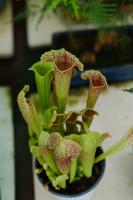What Happens to a Plant Cell Placed in Distilled Water
When a plant cell is placed in distilled water, a number of changes occur at the cellular level. These changes can have significant effects on the health and functioning of the plant. In this article, we will explore what happens to a plant cell when it is placed in distilled water, including the changes in osmotic pressure, turgor pressure, and cell structure.
Osmotic Pressure in Plant Cells
The first change that occurs when a plant cell is placed in distilled water is an increase in osmotic pressure. Osmosis is the movement of water molecules from an area of high concentration to an area of low concentration. In plant cells, water is typically held in vacuoles within the cell. These vacuoles contain dissolved salts, sugars, and other solutes that help to maintain the osmotic balance of the cell.
When a plant cell is placed in distilled water, the osmotic pressure outside the cell becomes higher than the osmotic pressure inside the cell. As a result, water begins to flow into the cell, causing it to swell. If too much water enters the cell, it can burst, leading to cell damage or death.
Turgor Pressure in Plant Cells
The second change that occurs when a plant cell is placed in distilled water is an increase in turgor pressure. Turgor pressure is the pressure exerted by the cell wall against the cell membrane, and it helps to maintain cell shape and size. When water enters a plant cell, it increases the turgor pressure inside the cell.
If too much water enters the cell, it can cause it to become turgid, or swollen. This can be beneficial for some tissues, such as the stems and leaves of plants, as it helps them to stand upright and access sunlight. However, if the cell becomes too turgid, it can place stress on the cell wall, leading to cell damage or death.
Cell Structure of Plant Cells
The third change that occurs when a plant cell is placed in distilled water is a change in the cell structure. As water enters the cell, it causes the cell membrane to stretch and expand. This can cause the membrane to become more permeable, allowing other solutes to enter the cell.
In addition, the increased turgor pressure can cause the cell wall to expand, leading to changes in its structure and composition. Over time, repeated exposure to distilled water can cause the cell wall to weaken, leading to reduced cell integrity and health.
Conclusion
Overall, placing a plant cell in distilled water can cause a number of changes at the cellular level, including changes in osmotic pressure, turgor pressure, and cell structure. While some of these changes can be beneficial for certain tissues, excessive exposure to distilled water can lead to cell damage or death. It is important for growers and gardeners to monitor the water and nutrient requirements of their plants and to provide them with the proper conditions for growth and development.

 how many times do yo...
how many times do yo... how many planted tre...
how many planted tre... how many pine trees ...
how many pine trees ... how many pecan trees...
how many pecan trees... how many plants comp...
how many plants comp... how many plants can ...
how many plants can ... how many plants and ...
how many plants and ... how many pepper plan...
how many pepper plan...






























